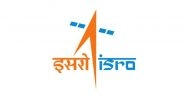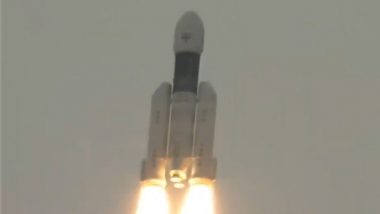Bengaluru, July 22: As India's second lunar mission Chandrayaan-2 marked one year of completion of launch by GSLV MkIII M1 on Wednesday, Indian Space Research Organisation said all its eight payloads are performing well.
The global mapping of the lunar surface and polar coverage are being carried out as per the mission plan, while public release of science data from Chandrayaan-2 for global use will begin in October, the space agency said. Also Read | Delhi Records 1,227 Fresh Coronavirus cases, Taking Tally to 1,26,323: Live News Breaking and Coronavirus Updates on July 22, 2020.
"Extensive data has been acquired from Chandrayaan-2 payloads and parameters are being derived for presence of water-ice in the polar regions, X-ray based and Infrared spectroscopic mineral information and mid and high latitude presence of Argon-40, a condensable gas on the Moon which gets released internally by radio-active decay of 40 K", ISRO said.
The report on the major findings from Chandrayaan-2 science experiments was planned to be released at the Annual Lunar Planetary Science Conference in March 2020, but was however cancelled due to the COVID-19 pandemic, it said. Also Read | India Ideas Summit: US Should Learn to Work in Multipolar World Beyond Old Alliances, Says EAM Jaishankar.
Public release of science data from Chandrayaan-2 for global use will begin in October 2020, wherein details for accessing the data will be provided, it added. Chandrayaan-2, aimed at landing a rover on unchartered Lunar South Pole, was launched on July 22, 2019 on board the country's most powerful geosynchronous launch vehicle.
The spacecraft was inserted into lunar orbit on August 20, 2019. The Chandrayaan-2 mission was India's first attempt to land on the lunar surface. ISRO had planned the landing on the South Pole of the lunar surface.
However, the lander Vikram hard-landed in September last year. Its orbiter, which is still in the lunar orbit, has a mission life of seven years. ISRO officials had earlier said it would be used for the third lunar mission as well.
(The above story is verified and authored by Press Trust of India (PTI) staff. PTI, India’s premier news agency, employs more than 400 journalists and 500 stringers to cover almost every district and small town in India.. The views appearing in the above post do not reflect the opinions of LatestLY)













 Quickly
Quickly


